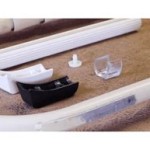How Much Slope Should a Patio Have?
When designing and building a patio, ensuring proper drainage is crucial to prevent water damage and ensure a safe and functional outdoor space. The slope or pitch of a patio is a vital factor that determines how effectively water will drain away from the surface. Determining the appropriate slope for your patio depends on several factors, including the climate, the materials used, and the size of the area.
Factors to Consider:
- Climate and Rainfall: Areas with heavy rainfall require steeper slopes to efficiently drain water. Conversely, regions with less rainfall may need a more moderate slope.
- Patio Materials: Different materials have varying water absorption and drainage rates. For instance, porous materials like permeable pavers allow water to seep through, requiring a lesser slope. Impermeable materials like concrete necessitate a steeper slope to prevent water from pooling.
- Patio Size: Smaller patios tend to require steeper slopes to ensure adequate drainage. Larger patios may need a more gradual slope, as the distance from the highest to the lowest point is greater.
Recommended Slopes:
Generally, the recommended slope for a patio is between 1% and 2%. This means that for every foot of horizontal distance, the patio should slope down between 1/8 inch (1.25 mm) and 1/4 inch (6.25 mm).
For areas with heavy rainfall or impermeable materials, a slope of 2% or more is preferable. For smaller patios or areas with good drainage, a slope of 1% may suffice.
Measuring and Installing the Slope:
- Measuring: To measure the slope, place a leveling tool (e.g., a carpenter's level) on the patio surface. For a 1% slope, adjust the level so that the bubble is 1 inch (25 mm) from one end of the tool.
- Installing: When installing the patio, ensure that the surface is properly graded and compacted. Install the pavers or other materials with the appropriate slope, ensuring a smooth transition from the highest to the lowest point.
Consequences of Improper Slope:
Failing to provide adequate slope can lead to several issues:
- Water Pooling: Insufficient slope can cause water to accumulate on the patio, creating slippery surfaces and breeding grounds for mosquitoes.
- Damage to Foundations: Water that pools around the base of a structure can seep into foundations, causing cracks and other structural damage.
- Erosion: Standing water can erode the soil beneath the patio, potentially compromising its stability.
Conclusion:
Determining the appropriate slope for a patio is essential for ensuring proper drainage and preventing potential problems. By considering the climate, materials used, and patio size, and following the recommended slope guidelines, you can create a functional and aesthetically pleasing outdoor space that will withstand the elements for years to come.

How Much Should A Patio Slope Away From House

How To Determine The Ideal Slope For A Paver Patio Craftsmumship

How Much Slope Should A Paver Patio Have Roofing Contractor Chimney Sweep Siding Masonry New Jersey

How Much Slope Should A Paver Patio Have Driveway Expert

Should A Deck Have Slope

How Much Fall Should A Patio Have Minster Paving

5 Slope Too Much For Patio Doityourself Com Community Forums

My Garden Is Sloped Can I Still Install A Patio Home Logic
Questions On Sloping A Raised Patio Lawn Care Forum

How To Set Grade For Hardscape Western Interlock
See Also








